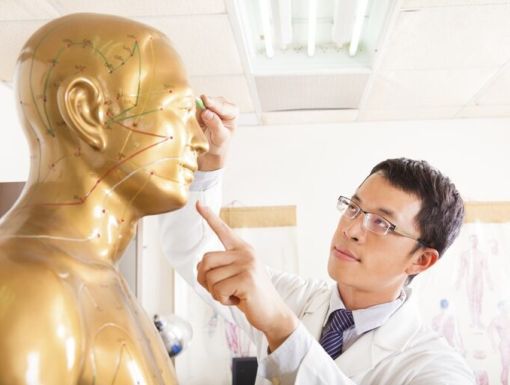
There is a New Olympic Ring and its Color is Purple
There is a new Olympic ring and its color is purple fading into green and yellow. It is called vacuum/cupping therapy and has been around for much longer than the Olympics, but made famous by the tell-tale marks from the treatment on Michael Phelps among others.
The skin is pulled into the cup by a vacuum effect. This can be achieved by using a suction pump attached to the top of the cup while a seal is maintained at the edge of the cup to create a negative pressure. The traditional Chinese technique is to use glass cups, place a flame in the cup to take away the oxygen and quickly place the cup over the skin to create the vacuum effect. The heat from the now warmed cup may feel good to the recipient, but therapeutically is not more effective than using plastic cups with a pump. The effect of this suction is a traumatic distortion and micro-tearing of the tissue stretching the skin and superficial fascia along with small blood vessels in the area.
This micro-tearing of the connective tissue and rupture of the blood vessels creates an “injury” that now requires healing to take place. The body has to go to work to repair the injured capillaries and get rid of the old blood (the bruise) and make new connective tissue that was destroyed at a cellular level. This work of micro-circulation creates new healthy tissue which can be better able to respond to function, exercise and/or rehabilitation based on the need of the cupped individual.
As physical therapists, we have always used that principle of creating a micro-injury to the tissue in order to enhance healing in order to be effective in our rehabilitation of our patients. Through the use of manual therapy techniques such as deep soft tissue mobilization/massage, myofascial release and using tools such as ASTYM or Hawk grips, we at times can have bruising of the tissue. Through these procedures we are trying to break up old ineffective connective tissue to restore normal tissue flexibility and to enhance healing. Establishing a healthy new tissue environment to work with our rehabilitation process can be much more effective as we work to achieve proper flexibility, strength, endurance and stability through our physical therapy program based on individual needs for restoration of function.
Vacuum/cupping therapy is another tool of manual therapy that physical therapists can use to achieve these results. Tough, chronic diagnoses such as hip bursitis, plantar fasciitis, tennis elbow, neck and low back pain have greatly benefitted from the addition of this modality in my practice. Some patients feel instant improvement in symptoms with noted improved pliability of tissue, others improve over time. The more chronic the problem, the slower the results.
However, just like the craze of dry needling, which is also considered to be effective by creating micro-injury and the body having to work on healing the injured tissue; manual therapy, dry needling and vacuum/cupping therapy is only a part of the rehabilitation process. The injured individual still must address the issues of loss of range of motion, weakness and instability that can be evaluated and addressed by a physical/occupational therapist for total recovering back to the highest level of function.
In my experience, cupping is not for everyone; just as dry needling is not for everyone. The procedure is uncomfortable. The individual may be sore as their body has to recover and heal from the bruising. Some individuals do not like the bruising from a cosmetic point of view. Individuals with skin or blood disorders, infections, cancer and significant edema in the area to be treated should not undergo cupping therapy. Medical conditions such as pregnancy and fibromyalgia have to be approached cautiously based on the diagnosis being treated if considering cupping as a treatment option.
The good news is that if an individual is an overall healthy person he/she will recover and heal from the cupping procedure and there are no long term negative side effects to cupping and there may be positive long lasting ones. Vacuum/cupping therapy can be an effective adjunct to the rehabilitation of musculoskeletal disorders, but again is only one part of the whole rehabilitation process that is required to get patients back to their full, optimal level of function.



